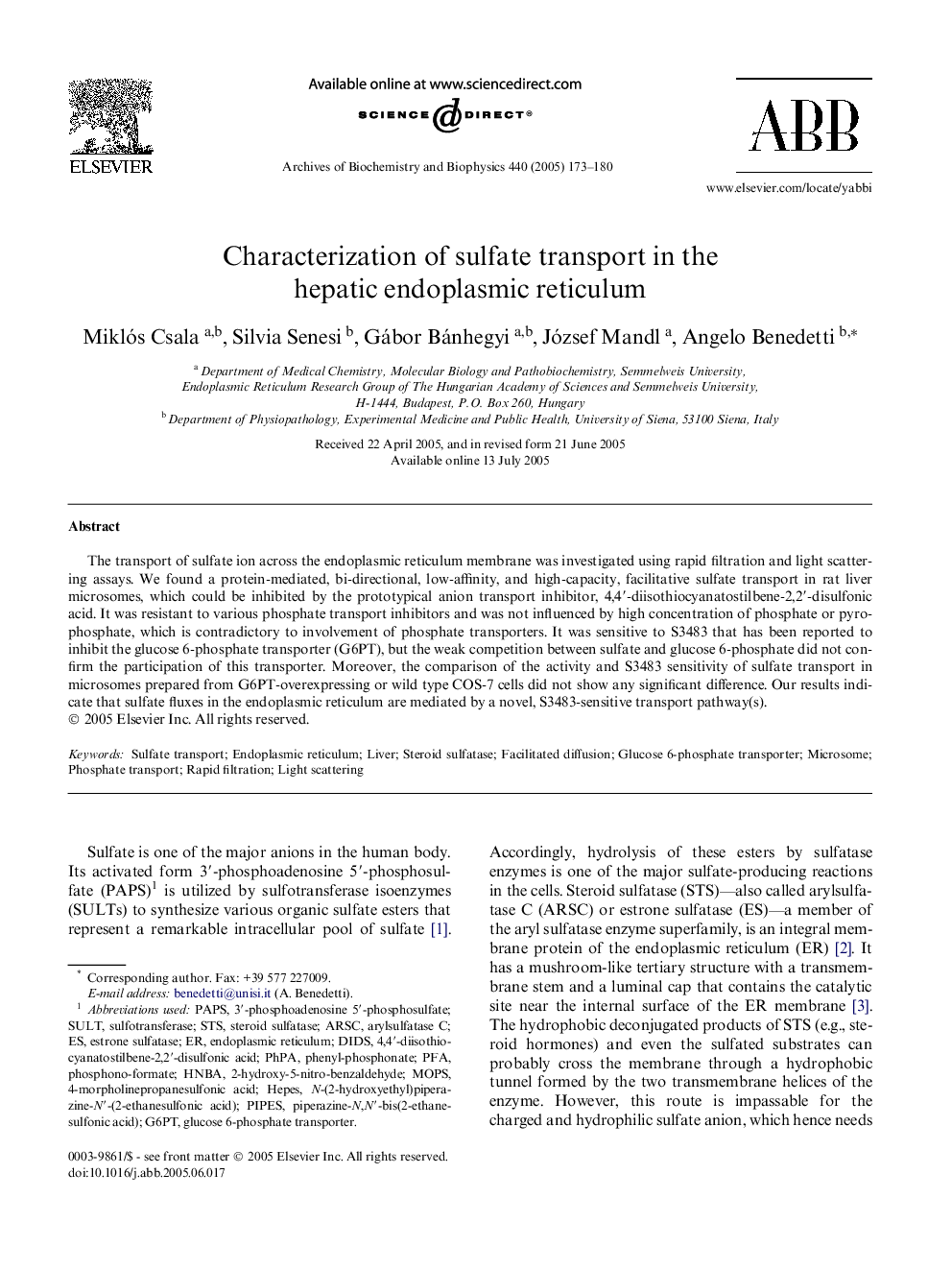| Article ID | Journal | Published Year | Pages | File Type |
|---|---|---|---|---|
| 9882147 | Archives of Biochemistry and Biophysics | 2005 | 8 Pages |
Abstract
The transport of sulfate ion across the endoplasmic reticulum membrane was investigated using rapid filtration and light scattering assays. We found a protein-mediated, bi-directional, low-affinity, and high-capacity, facilitative sulfate transport in rat liver microsomes, which could be inhibited by the prototypical anion transport inhibitor, 4,4â²-diisothiocyanatostilbene-2,2â²-disulfonic acid. It was resistant to various phosphate transport inhibitors and was not influenced by high concentration of phosphate or pyrophosphate, which is contradictory to involvement of phosphate transporters. It was sensitive to S3483 that has been reported to inhibit the glucose 6-phosphate transporter (G6PT), but the weak competition between sulfate and glucose 6-phosphate did not confirm the participation of this transporter. Moreover, the comparison of the activity and S3483 sensitivity of sulfate transport in microsomes prepared from G6PT-overexpressing or wild type COS-7 cells did not show any significant difference. Our results indicate that sulfate fluxes in the endoplasmic reticulum are mediated by a novel, S3483-sensitive transport pathway(s).
Keywords
Related Topics
Life Sciences
Biochemistry, Genetics and Molecular Biology
Biochemistry
Authors
Miklós Csala, Silvia Senesi, Gábor Bánhegyi, József Mandl, Angelo Benedetti,
